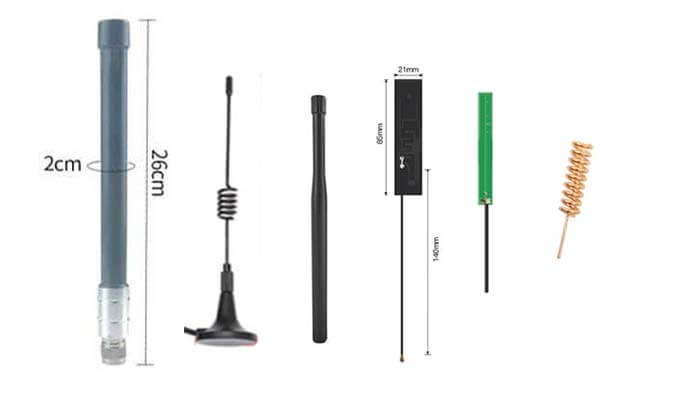
Antennas are widely used in the fields of telecommunications such as wireless communications, broadcasting, and television.
The antenna either receives an electromagnetic wave and converts it into an electrical signal, or receives an electrical signal and radiates it as an electromagnetic wave.
As a wireless transmitter/receiver, an antenna is an important device that affects the strength and quality of signals, and its importance in the field of mobile communications is extremely important. Through antenna selection, antenna installation, and antenna adjustment, signal strength and quality are ensured in the coverage area of the base station. That proficiency is one of the basic requirements of a test engineer’s skill.
Antenna concept and signal reception principle
Antennas are much more than simple devices connected to every radio. They’re the transducers that convert the voltage from a transmitter into a radio signal. And they pick radio signals out of the air and convert them into a voltage for recovery in a receiver.
What is an antenna?
The antenna converts the electrical signal transmitted from the device into electromagnetic waves and transmits it. All antennas have a transmit/receive function, and there may be a receive-only antenna (such as a broadcast antenna) when used in the field.
How an antenna works?
Antenna reception signal principle
The antenna itself is an oscillator, but unlike a normal LC tank, it is a modified version of a normal tank.
The electric field is concentrated on the two plates of the capacitor, but the magnetic field is distributed in the limited space of the induction coil, so the electromagnetic waves are clearly not radiated over a large space.
When the oscillating circuit is deployed, the electromagnetic field is dispersed over a large space, creating conditions suitable for radiation.
Therefore, the modulated high-frequency signal current from the transmitter is sent to the antenna by the feeder, the high-frequency current energy is converted into the corresponding electromagnetic energy through the antenna, and the electromagnetic energy is radiated into space. It is radiated from the transmitting antenna. Propagate forward along the ground in all directions.
When a wire is placed in an AC electromagnetic field, the lines of magnetic force cut the wire, causing a constant AC voltage and electromotive force to be excited across the wire, the frequency of which is the same as the signal frequency.
If the wire is connected to the receiver via a feeder, the current of the modulated signal can be obtained at the receiver.
Therefore, this wire plays a role in receiving electromagnetic wave energy and converting it into high-frequency signal current energy, and this wire is called a receiving antenna.
Whether they are transmitting or receiving antennas, they are all energy converters, and reversibility is a hallmark of common energy converters.
You can use the same antenna as the transmit or receive antenna. Communication equipment typically uses the same antenna for both reception and transmission.
Therefore, the same antenna is not only related to the effective energy output of the transmitting system but also directly affects the performance of the receiving system.
The reversibility of the antenna is revealed by the fact that the transmitting antenna can be used as the receiving antenna, the receiving antenna can be used as the transmitting antenna, and the parameters when using the antenna as the transmitting antenna are maintained in the parameters. No change when used as a receiving antenna, this is the reciprocal principle of the antenna.
The importance of the antenna
Antennas are a very important part of wireless systems, and their importance cannot be overemphasized. Of course, in wireless systems, the antenna is only on one side.
When discussing antennas, some people talk about height and power. In fact, all aspects of the system need to be reasonably planned and deployed. Discuss the problem of controlling variables, and the antenna discussion is carried out under the condition that all other conditions are exactly the same.
Properly placed radio stations also need the right antennas to work together. The type of antenna you use depends on your needs, but the right antenna is very important.
At the time of transmission, the radio frequency signal output from the radio is transmitted to the antenna via the feeder and radiated from the antenna in the form of electromagnetic waves.
After the electromagnetic waves arrive at the receiving location, a small portion of their power is captured by the antenna, which converts the radio signal in the air into an electrical signal that the radio station can recognize.
An antenna is a very important device for transmitting and receiving electromagnetic waves. Without antennas, wireless is not widespread today.
The Yagi antenna is a directional antenna. A directional antenna means that it radiates only within a certain angular range of the horizontal pattern. That is, it is usually directional.
In fact, the vertical radiation of the Yagi antenna has only a certain angle, so for satellite communication, it needs to rotate both horizontally and vertically. The higher the number of units, the narrower the lobe width, the higher the gain, and the higher the accuracy requirements of the steering system.
An omnidirectional antenna means that it radiates 360 ° uniformly in a horizontal pattern. This is commonly referred to as omnidirectional. However, vertical maps only radiate within a certain angular range. For commonly used fiberglass rod antennas, the longer the antenna, the narrower the vertical lobe, and the higher the gain.
Antennas are neither good nor bad, each has its own strengths and weaknesses, and you need to choose the one that suits you according to your actual needs and installation conditions.
Besides this article, you may also be interested in the below articles.
What is the difference between WIFI and WLAN?
Summary of 41 Basic Knowledge of LTE
What Is The 5G Network Slicing?
